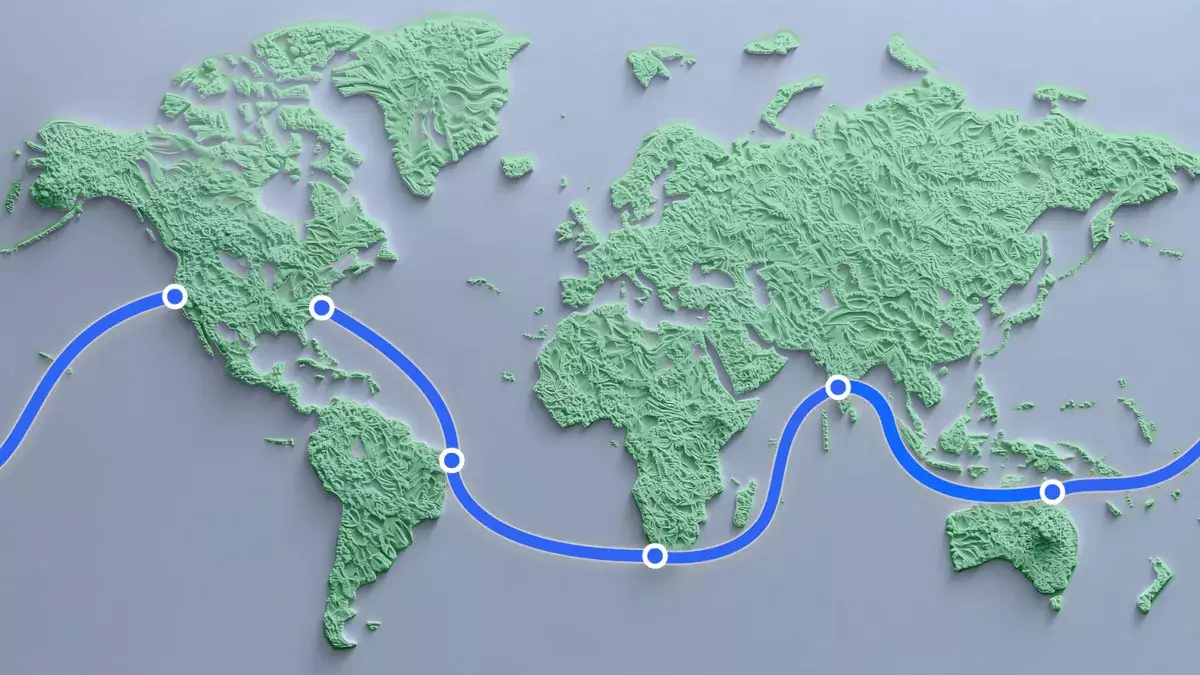In an age defined by wireless convenience and digital immediacy, it’s easy to overlook the physical infrastructure that supports our online existence. As we navigate through 2025, the underlying reality reveals a surprising statistic: an overwhelming 98% of internet traffic is transmitted through extensive cable networks. One of the latest ventures to enhance this backbone of global communication is Meta’s ambitious undersea cable project, known as Project Waterworth. This significant undertaking promises to extend connectivity across continents, reinforcing the need for not just technological advancement but also a robust physical framework.
Project Waterworth is not just another undersea cable; it is poised to be the longest of its kind in the world, stretching approximately 31,000 miles (50,000 kilometers) and reaching depths of up to four miles into the ocean. For perspective, this astounding length surpasses the Earth’s own circumference, which hovers around 25,000 miles. The scope of this project highlights Meta’s commitment to bolstering the infrastructure of the digital age, while also showcasing the complexities involved in such endeavors. Instead of a straightforward linear connection, the cable’s path winds from the eastern shores of the United States, then weaves its way to Brazil, traverses the Atlantic, navigates around the southern tip of Africa, and ultimately extends to Asia and Australia before looping back to the West Coast of the U.S.
What makes Project Waterworth noteworthy is not just the distance it covers, but also the innovative techniques employed in its construction. Meta has articulated plans to incorporate advanced engineering designs intended to enhance cable resilience. This ensures that the deployment of the cable remains unimpeded, even in turbulent waters. The company plans to implement pioneering routing chapters within the project, targeting deep sea locations that mitigate risks associated with conventional cable laying methods. This involves creating carefully plotted paths that maximize the cable’s exposure to deep waters, where the risks of damage from external factors such as fishing trawlers and ship anchors are minimized.
Additionally, Meta has committed to enhanced burial techniques in vulnerable coastal regions, ensuring maximum protection against natural and man-made hazards. This approach not only demonstrates a forward-thinking methodology but also reflects an understanding of the complex environmental interactions involved in underwater cable systems.
The motivation driving the multi-billion dollar investment in Project Waterworth extends beyond mere connectivity. Meta describes the initiative as a way to strengthen and diversify the world’s digital highways. With the continuous evolution of technology, including AI innovations, increased internet capacity is essential. The new oceanic corridors that Project Waterworth will create are set to open up high-speed pathways of digital communication that underpin various sectors of modern life.
While the practical applications of enhanced global connectivity are crucial, the project reflects Meta’s larger strategy to position itself as a leader in the tech landscape, ensuring that its platforms remain reliable and efficient in the face of growing digital demands. The implications of this project will resonate within the realms of commerce, education, and social interaction worldwide.
Despite the groundbreaking ambitions of Project Waterworth, Meta hasn’t been without its share of controversy. Following criticism surrounding its moderation practices, CEO Mark Zuckerberg has opted to implement a novel fact-checking system that some perceive as a move away from stringent oversight. This shift may reduce the effectiveness of tackling harmful content on platforms like Facebook and Instagram, suggesting an ongoing struggle between corporate responsibility and freedom of expression.
Nonetheless, the construction of the new cable serves as a reminder of the significance of physical projects that contribute directly to global connectivity and, by extension, societal progress. As the digital landscape continues to develop, initiatives like Project Waterworth provide necessary infrastructure that whispers of a future where access to information knows no bounds.
As we forge ahead into an increasingly interconnected world, Meta’s Project Waterworth stands as a testament to the fundamental role of infrastructural integrity in digital communication. The project encapsulates the delicate balance between technological innovation and physical implementation, ultimately serving as a critical link among the world’s diverse cultures and economies. Beyond regulatory debates and social media controversies, the effort to build a global high-speed communications network gives hope that the digital age can be both expansive and responsible, connecting lives in unprecedented ways.

